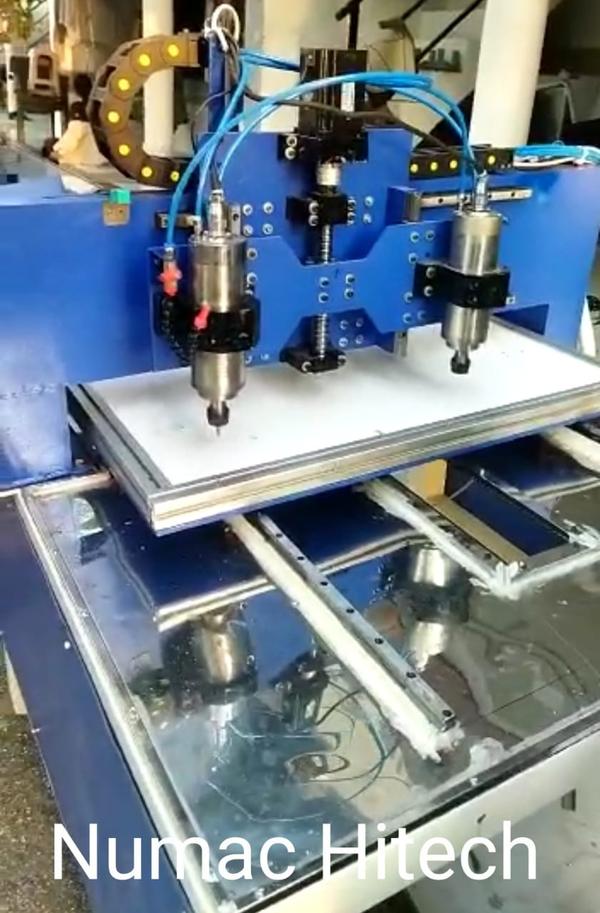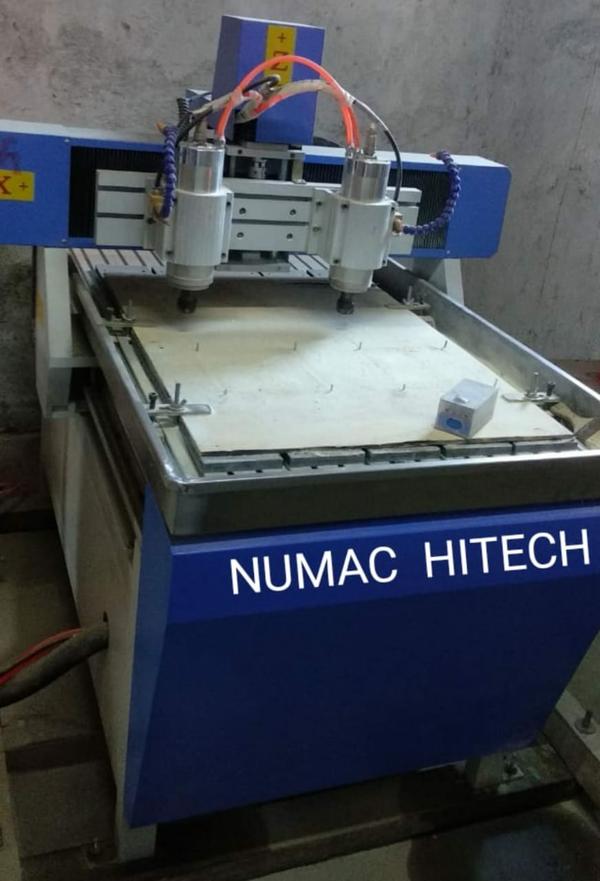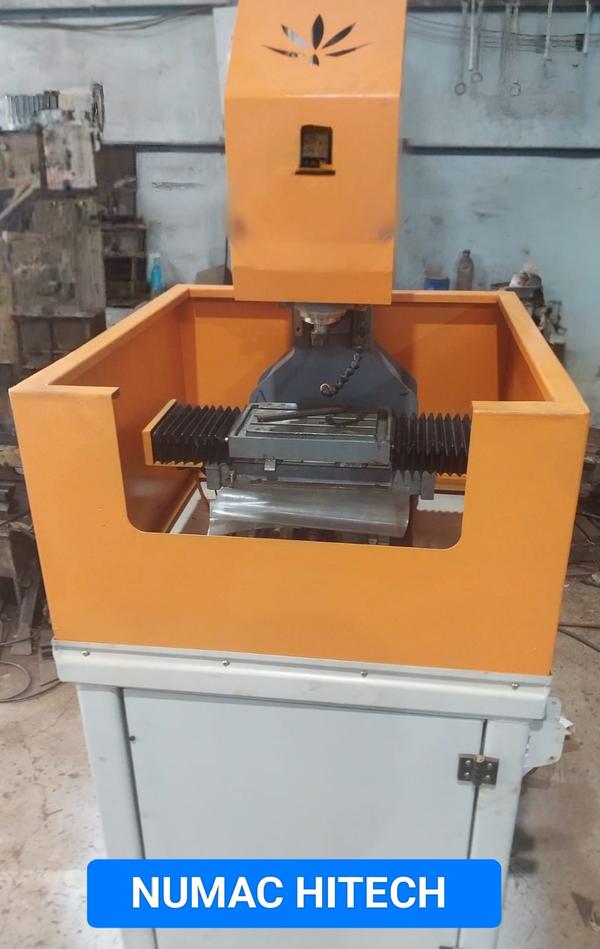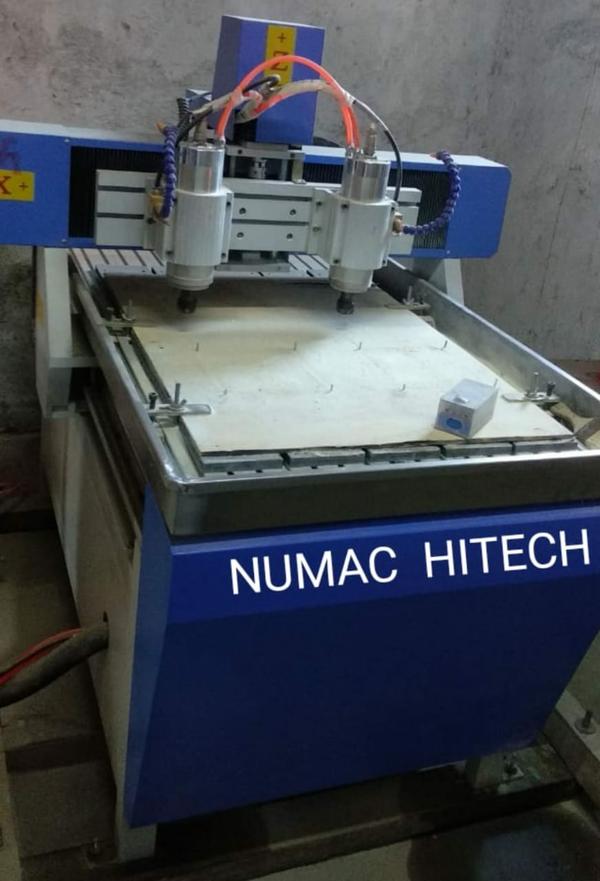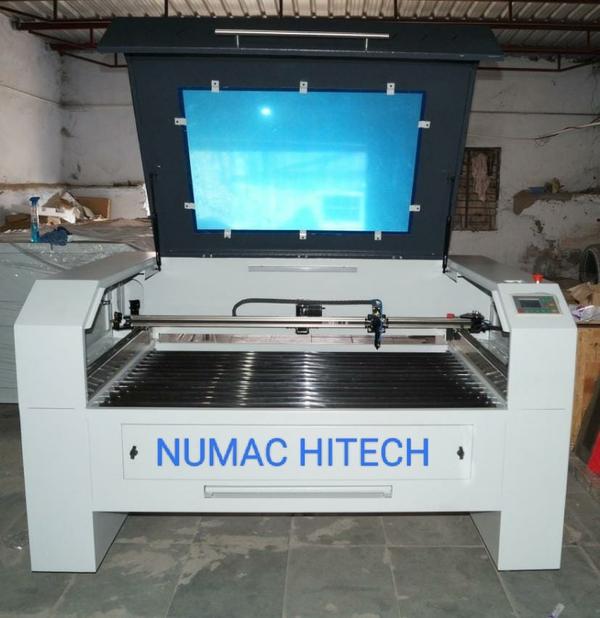A PCB CNC drilling machine is designed for precise drilling and routing of printed circuit boards (PCBs). These machines are essential for creating the holes needed for component leads and vias in PCBs. Below are the typical technical specifications of a PCB CNC drilling machine: ### *Technical Specifications:* 1. *Working Area:* - *X, Y Travel:* Common sizes include: - *600 mm x 900 mm - *1200 mm x 1200 mm - Larger machines may have work areas of 600 mm x 400 mm or more. - *Z-Axis Travel:* Typically 50 mm to 100 mm 2. *Spindle:* - *Spindle Power:* 0.8 kW to 2.2 kW (depending on the model) - *Spindle Speed:* 24,000 to 60,000 RPM, high-speed spindles are preferred for fine drilling - *Collet Size:* Typically ER8, ER11, or custom collets for PCB drill bits 3. *Positioning Accuracy:* - *Positioning Accuracy:* ±0.01 mm - *Repeatability:* ±0.005 mm 4. *Drilling Capability:* - *Drill Bit Diameter:* Typically ranges from 0.6 mm to 3.2 mm - *Max Drilling Speed:* High-speed drilling with rates up to 120 hits per minute, depending on machine and material 5. *Control System:* - *Controller:* PC-based or DSP control systems - *Software Compatibility:* Compatible with Gerber files and CAD/CAM software specific to PCB design (e.g., Altium Designer, Eagle, KiCad) - *File Formats Supported:* G-code, Excellon, NC Drill, etc. 6. *Drive System:* - *Motors:* Precision stepper motors or servo motors - *Transmission:* Ball screw transmission for smooth and accurate movement - *Guide Rails:* Linear guide rails for high precision 7. *Power Supply:* - *Voltage:* Typically 220V/50Hz, though smaller machines may operate at 110V - *Power Consumption:* Ranges from 1 kW to 3 kW depending on the machine's spindle power and additional features 8. *Table Structure:* - *Table Surface:* Flat surface, often with a vacuum table or fixture system to secure the PCB - *Fixture System:* Adjustable clamps or vacuum bed for securing PCB during drilling 9. *Tool Cooling and Dust Extraction:* - *Cooling Method:* Air cooling or mist cooling system for the spindle and drill bits - *Dust Collection:* Integrated dust extraction system to remove debris and maintain a clean working environment 10. *Machine Dimensions and Weight:* - *Dimensions:* Compact design, typically around 800 mm x 600 mm x 600 mm, though larger models may be bigger - *Weight:* Generally ranges from 100 kg to 300 kg, depending on the build and features 11. *Optional Features:* - *Automatic Tool Changer (ATC):* For changing drill bits automatically during the process - *Vision System:* For alignment and inspection, ensuring precise drilling - *Router Capability:* Some machines also offer routing capabilities for cutting out the PCB outline - *Multi-Head Design:* Allows for simultaneous drilling of multiple holes 12. *Safety Features:* - *Emergency Stop Button:* For immediate shutdown in case of emergency - *Cover/Enclosure:* To protect the operator from debris and noise These specifications can vary based on the manufacturer and specific model, so it's important to verify the exact specs to match your production needs. PCB CNC drilling machines are critical for high-precision work, and selecting the right one depends on the complexity and volume of your PCB production.
Send Message
